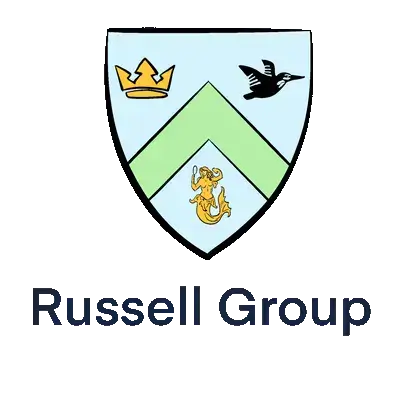IB Physics Syllabus
The International Baccalaureate Diploma Programme is made up of a core and six subject groups. The core has three compulsory elements:
- Theory of Knowledge
- Extended Essay
- Creativity, Activity and Service
There are six subject groups:
- Studies in Language and Literature
- Language Acquisition
- Individuals and Societies
- Sciences
- Mathematics
- Arts
Physics falls into the Sciences (Group four), and can be studied at Standard or Higher Level. Each student can take three, or maximum four, at Higher Level and the remaining three, or two, at Standard Level. Standard Level subjects require 150 hours of teaching whereas Higher Level subjects require 240 hours of teaching.
Physics is the most fundamental of the sciences, as it seeks to explain the universe from the very smallest particles to the vast distances between galaxies.
Despite the exciting and extraordinary development of ideas throughout the history of Physics, observations remain essential to the very core of the subject. Models are developed to try to understand observations, and these themselves can become theories that attempt to explain the observations.
The Physics syllabus has a number of core elements to both Standard and Higher Level. At Higher Level some topics are studied in greater depth and also there is additional material to study. The breakdown of topics for Standard and Higher Level are shown below.
| Syllabus component |
Standard Level (Hours) |
Higher Level (Hours) |
| Core |
95 |
95 |
| 1. Measurements and Uncertainties |
5 |
5 |
| 2. Mechanics |
22 |
22 |
| 3. Thermal Physics |
11 |
11 |
| 4. Waves |
15 |
15 |
| 5. Electricity and Magnetism |
15 |
15 |
| 6. Circular Motion and Gravitation |
5 |
5 |
| 7. Atomic, Nuclear and Particle Physics |
14 |
14 |
| 8. Energy Production |
8 |
8 |
| Additional Higher Level (AHL) |
|
60 |
| 9. Wave Phenomena |
|
17 |
| 10. Fields |
|
11 |
| 11. Electromagnetic Induction |
|
16 |
| 12. Quantum and Nuclear Physics |
|
16 |
| Option (Choose one) |
15 |
25 |
| A. Relativity |
15 |
25 |
| B. Engineering Physics |
15 |
25 |
| C. Imaging |
15 |
25 |
| D. Astrophysics |
15 |
25 |
| Practical scheme of work |
40 |
60 |
| Practical activities |
20 |
40 |
| Individual investigation (internal assessment – IA) |
10 |
10 |
| Group 4 project |
10 |
10 |
| Total teaching hours |
150 |
240 |
The assessment objectives for Physics reflect those parts of the aims that will be formally assessed either internally or externally. The assessments will centre upon the nature of science and have the following four objectives:
- Demonstrate knowledge and understanding of:
- facts, concepts and terminology
- methodologies and techniques
- communicating scientific information
- Apply:
- facts, concepts and terminology
- methodologies and techniques
- methods of communicating scientific information.
- Formulate, analyse and evaluate:
- hypotheses, research questions and predictions
- methodologies and techniques
- primary and secondary data
- scientific explanations.
- Demonstrate the appropriate research, experimental and personal skills necessary to carry out insightful and ethical investigations.
The Standard Level (SL) and Higher Level (HL) have 80% externally assessed and 20% internally assessed. The external assessment of Physics consists of three written papers.
In paper 1 there are 30 (at SL) or 40 (at HL) multiple-choice questions. For SL and HL Paper 1 has 10% of the paper covering objectives 1 and 2 and 10% of the paper covering objective 3. The overall weighting of paper 1 for both SL and HL is 20%.
Paper 2 contains short-answer and extended-response questions on the core (and Additional Higher Level material at HL). For SL Paper 2 has 20% of the paper covering objectives 1 and 2 and 20% of the paper covering objective 3 giving an overall weighting of 40% for paper 2. For HL Paper 2 has 18% of the paper covering objectives 1 and 2 and 18% of the paper covering objective 3 giving an overall weighting of 36% for paper 2.
Paper 3 has two sections; Section A contains one data-based question and several short-answer questions on experimental work on the core (and AHL material at HL). Section B contains short-answer and extended-response questions from each of the four options. For SL Paper 3 has 10% of the paper covering objectives 1 and 2 and 10% of the paper covering objective 3 giving an overall weighting of 20% for paper 3. For HL Paper 3 has 12% of the paper covering objectives 1 and 2 and 12% of the paper covering objective 3 giving an overall weighting of 24% for paper 3.
The internal assessment is an integral part of the course and is compulsory for both SL and HL students. The internal assessment carries a weighting of 20% for both SL and HL. It enables students to demonstrate the application of their skills and knowledge, also to pursue their personal interests, without the time limitations and other constraints that are associated with written examinations. The internal assessment requirements at SL and at HL are the same.










